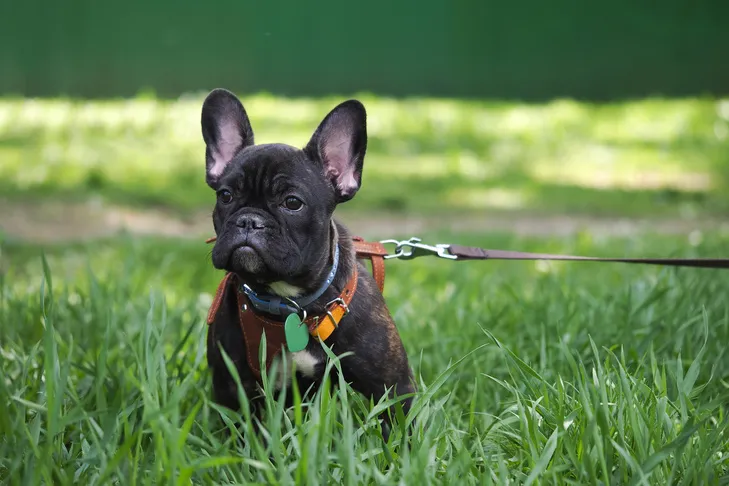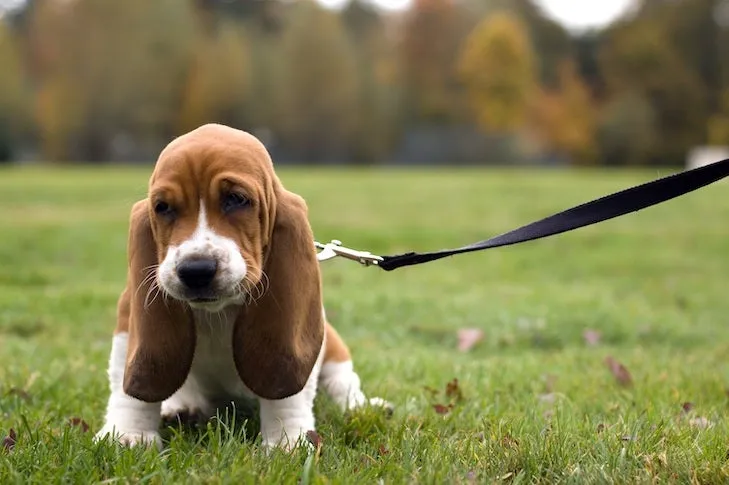Many new puppy parents wonder when to start walking a puppy on a leash, assuming it’s an innate skill. However, polite leash walking is a crucial behavior that needs to be systematically taught and reinforced from a young age. Starting early, often even before your puppy is ready for outdoor adventures, lays a strong foundation for pleasant walks throughout their life. This guide will walk you through the optimal timing and the step-by-step process of introducing your puppy to a leash, ensuring they develop into a confident and well-behaved walking companion. Beyond just understanding when should i start walking my puppy on a leash, we will also delve into practical training techniques and how to address common challenges.
Before taking your puppy on outdoor walks, it’s vital that they have completed their full series of vaccinations and received clearance from your veterinarian. This typically happens around 12-16 weeks of age, protecting them from common canine diseases. However, you can — and should — begin leash training indoors much sooner, usually around 8 weeks old. This early indoor exposure allows your puppy to become comfortable with wearing a collar or harness and feeling the leash without the overwhelming distractions of the outside world. Building this positive association inside will make the transition to outdoor walks smoother and more enjoyable for both of you. Dog training expert and AKC Family Dog columnist Kathy Santo emphasizes the importance of these foundational steps.
Essential Steps for Leash Training Your Puppy
Establishing a solid foundation for leash walking is key to a harmonious relationship with your furry friend. Follow these steps to introduce your puppy to the leash and help them develop positive associations and good habits from the start.
Introduce the Collar or Harness and Leash
Begin by making the collar or harness and leash a positive experience. Let your puppy wear a lightweight collar or a comfortable harness for short periods while indoors, especially during playtime or when receiving treats. The goal is for your puppy to associate these items with fun and rewards, not punishment or restriction. Keep these initial sessions brief, gradually increasing the duration as your puppy becomes more comfortable. This early exposure helps your puppy get used to a leash and feel less bothered by it when it’s time for actual walks.
Teach a Sound Cue for Attention
Introduce a consistent sound cue that signals “food is coming” or “attention on me.” Many trainers use a clicker, a verbal marker like “yes,” or even a simple tongue cluck. In a quiet, distraction-free environment, with your puppy wearing their collar and leash, make your chosen sound. The instant your puppy turns their head towards you or makes eye contact, reward them with a small, high-value treat. Repeat this frequently. Soon, your puppy will not only look at you upon hearing the cue but will also eagerly come to you, anticipating a treat. This establishes a vital communication link.
 French bulldog puppy in a harness sitting in tall green grass on a leash for a walk.
French bulldog puppy in a harness sitting in tall green grass on a leash for a walk.
Encourage Coming Towards You
Once your puppy understands the sound cue, integrate movement. While they are on their way to you after hearing the cue, take a few steps backward. Reward them generously when they reach you. Gradually extend the distance, encouraging your puppy to follow you for several paces before receiving their reward. Remember that puppies have very short attention spans, so keep training sessions brief and positive. Always end the session while your puppy is still enthusiastic and wanting more, rather than pushing them until they are tired or frustrated. This builds their desire to engage with you.
Practice Leash Walking Inside
With your puppy now understanding how to respond to your cue and follow you, it’s time to practice walking a few steps indoors. Choose a room with minimal distractions. The sensation of the leash around them and the subtle guidance you provide will be enough of a challenge initially. Continue to offer treats and praise enthusiastically as your puppy learns to walk alongside you, even for short distances, while wearing the leash. This controlled environment is perfect for building confidence before venturing out.
Transition to Outdoor Walks
Finally, once your puppy has completed their vaccinations and your vet gives the green light for outdoor exposure, you can begin to test their skills in the real world. This step presents new challenges, as the multitude of sights, sounds, and smells will be incredibly stimulating for your puppy. Be patient and keep these initial outdoor walks very short. Stay highly observant of your puppy’s body language. If you notice them about to lunge towards something or become overly distracted, immediately use your attention cue and take a few steps away, then reward them with a treat for following you. Consistent reinforcement in the face of distractions is key to successful outdoor leash manners.
 Basset Hound puppy sitting in the grass on lead.
Basset Hound puppy sitting in the grass on lead.
Leash-Training Troubleshooting
Even with the best training, puppies will encounter new situations and distractions as they grow, leading to common leash-walking challenges. Teaching your dog loose-leash walking is not only more enjoyable for both of you but also prepares them for more advanced training, such as the Canine Good Citizen test. Here are some tips from the AKC GoodDog! Helpline for addressing common issues.
If Your Puppy Pulls on the Leash
Pulling is one of the most frequent complaints from dog owners. If your puppy starts to pull ahead, immediately become “a tree.” Stand perfectly still and refuse to move an inch until your dog returns to your side or slack appears in the leash. Avoid yanking or jerking the leash; this can be painful and damaging to your dog’s neck, and it often exacerbates pulling. When they stop pulling and look at you, reward them and continue walking. Tools like front-hook harnesses and head halters can also be very effective for dogs that are persistent pullers, as they redirect the dog’s focus and reduce their ability to pull effectively. Remember to also consider how often should i take a puppy out to potty, as sometimes urgency can lead to pulling.
If Your Puppy Lunges at Distractions
Lunging at other dogs, people, cars, or other exciting stimuli is another common behavior that can be managed with proactive training. The key is to intervene before your puppy has a chance to lunge. If you spot a potential trigger, try to redirect their attention with your sound cue and a high-value treat before they react. Increase the distance between your dog and the target of their fixation. Always stay alert and be prepared to move away or engage your puppy before the distraction gets too close. While this behavior might be more common in breeds with strong prey drives, any dog can be startled or overstimulated.
If Your Puppy Barks Excessively
Some puppies develop a habit of barking at other dogs or people while on walks. This behavior can sometimes stem from a lack of appropriate physical and mental exercise. Ensure your dog receives adequate stimulation for their age and breed. If barking persists, employ the same proactive strategy used for lunging. Create distance from the trigger and offer treats to redirect their attention before they begin to bark. Consistently pairing the sight of other dogs with positive reinforcement (treats from you) will teach your puppy to look to you instead of barking, gradually building a calm association. Continued training can help you teach a dog to walk on a leash without pulling or barking.
With consistent practice and patience, you’ll gradually reduce the need for constant troubleshooting. It’s always a good idea to carry treats to randomly reinforce good leash-walking behavior, ensuring your puppy continues to associate walks with positive experiences and rewards for calm, attentive conduct.
Navigating the world with a well-behaved puppy on a leash is a rewarding experience for both owner and dog. By understanding the optimal time to begin training, following a structured approach, and addressing challenges patiently, you can foster a lifelong bond built on trust and clear communication. Remember, every walk is an opportunity to reinforce good habits and enjoy quality time with your canine companion.
